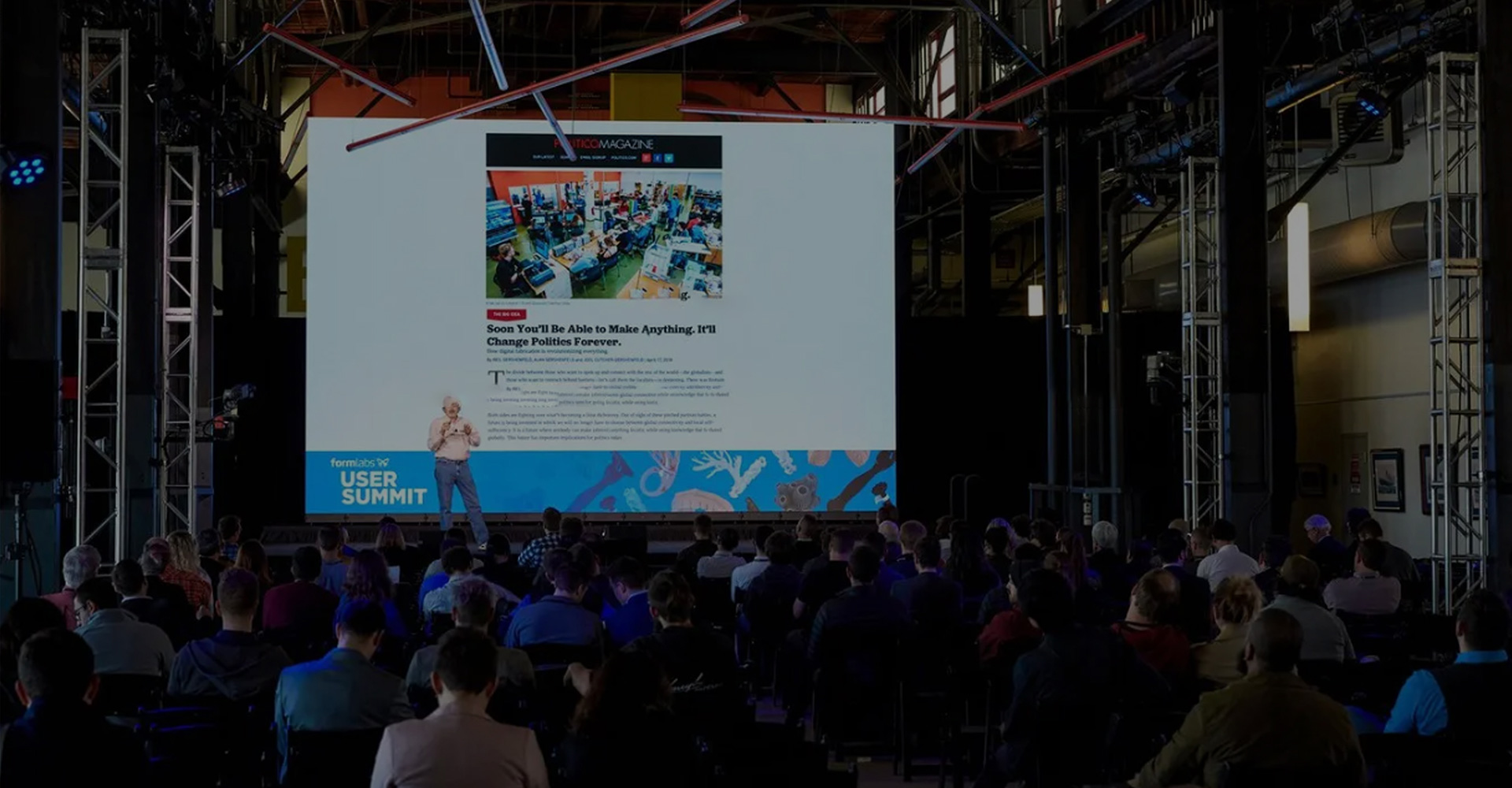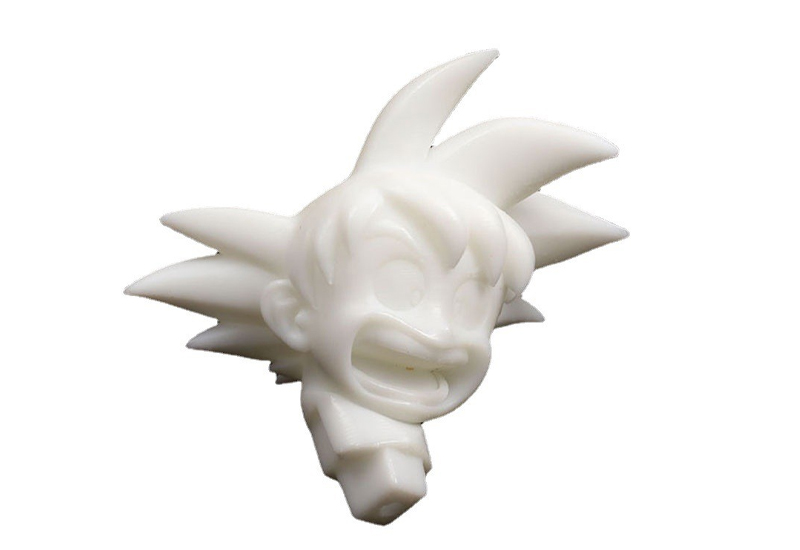
SLA is a kind of photocuring molding technology. Due to its mature technology, diversified materials, high precision and low price, it has been widely used in product development and production by many enterprises. For example, the common 3D printed shoes, 3D printed portrait and 3D printed handwork on the market can be directly produced by SLA process. Then what is SLA process and what are the requirements of SLA process for product design?

1. What is SLA process?
SLA full name three-dimensional photocuring molding, is the use of specific wavelength and intensity of ultraviolet light irradiation liquid photosensitive resin polymerization reaction, to solidify layer by layer and generate three-dimensional entity molding method.
2. What is the SLA process principle?
SLA irradiates the liquid photosensitive resin with ultraviolet light to cure it. In the process of processing, the platform will sink into the resin tank layer by layer, and the resin tank will be filled with liquid resin. Ultraviolet light will irradiate on the liquid surface under the action of deflection vibrator, and scan according to the cross-section profile information. A plane scan produces a layer corresponding to the layered plane shape, which is firmly bonded to the solidified part of the previous layer, and so on until the entire work piece is completed. SLA process generally requires cleaning, removal of support, polishing and recuring to obtain products that meet the requirements. SLA process needs to add support to the overhanging part, and the product and support are made of the same material. For the color model, it also needs to be colored in the later stage.
3. What are the advantages of SLA process?
(1) High precision, smooth surface, can make large size products;
(2) good rigidity, excellent acute Angle, shrink;
(3) Excellent surface details, excellent texture, fast production speed;
(4) A wide variety of resins (white, translucent, transparent, high toughness, etc.) to meet various performance requirements.
4. Which industries can SLA process be applied to?
(1) Rapid processing of high-precision, high surface quality, multi-detail hand plate samples, can be used for automotive mold, medical biology, consumer electronics, game animation, architectural design, sculpture modeling, home decoration and other fields of conceptual models, general parts, appearance verification, assembly verification, in some cases can be used for functional testing.
(2) Materials with corresponding characteristics for special requirements, such as heat-resistant resin and transparent resin.
5. What are the requirements of SLA process for product design?
When using SLA process to do product development and production, attention should be paid to the detailed structure of the model in the design process. The detailed structure requirements of SLA process are generally as follows:
(1) The minimum detail wall thickness: 0.6mm (the thickness of large section should be greater than 2mm);
(2) Minimum independent column diameter: 1mm;
(3) Minimum stroke width of convex (concave) word: 0.35;
(4) Maximum hole diameter: 1mm;
(5) Minimum gap: 0.4mm;

6. Design principles
(1) Principle of shell wall thickness For thick models, if the extraction of the shell does not affect its performance, it is recommended to pump the shell, which can reduce the weight of the model and reduce the cost of the model. For large models, it is recommended to add reinforcement after the extraction of the shell, which can greatly reduce the degree of deformation of the model. Of course, this also needs to be analyzed according to the structure of the model. The minimum extraction shell wall thickness requirement of SLA process is related to the overall size, and the wall thickness should be increased with the increase of product size. For small size parts (≤200mm) and medium size parts (200-400mm), the recommended minimum wall thickness is 2mm. For large size parts (≥400), the recommended minimum wall thickness is greater than 3mm.
(2)35° Design principles Mentioned above, support should be added to the overhanging part of SLA process, and the critical value of overhanging Angle is generally 35°. Therefore, under the premise of not affecting the performance of the model, the Angle between the overhanging wall and the bottom surface can be designed to be greater than 35°, and the rounded Angle can be added when appropriate to reduce the support and ensure the size and surface quality of the model.
For concave text or surface details, it is generally recommended that the line width should be at least 0.35mm and the depth 0.35mm. For raised text or surface details, it is recommended that the width should be at least 0.35mm and the height of the bulge should be at least 0.35mm. Assembly models generally have multiple independent shells. For assemblies that are easy to disassemble, we choose to disassemble and print them, so as not to affect the free placement of each part and the best surface quality of the product. It is generally recommended that the assembly gap be > 0.3mm. But for some of the integrated printing of the movable model, some parts can not be disassembled, of course, you can also print, generally recommended assembly clearance ≥0.4mm, or it may be printed into one with other parts. Sometimes, for the convenience of printing, you can also use a support beam to connect all the shells, so that you can ensure that your parts will not be lost during mass printing. Generally, it is recommended that the thickness of the support beam is not less than 3mm.

7.SLA process principles
(1) 45° placement principle Model placement has a great impact on product surface quality and strength. It is generally recommended that the complex features of the workpiece face up, and the horizontal step texture of the workpiece with a curved surface is very obvious, similar to contour topographic map. It is generally recommended that the workpiece be placed at a 45° Angle with the bottom of the platform or vertically, and the long workpiece and scraper are placed vertically or diagonally at 45°.
(2) Stitching principle For oversized parts beyond the size of the printing platform, you can adopt the stitching method, and it is generally recommended that the stitching gap is > 0.3mm. When stitching, triangle, rectangle, sawtooth, boss and pin type can be added for positioning and connection, and AB glue is used for bonding.
(3) The principle of process holes in order to ensure the smooth flow of liquid resin in the cavity of the model after pumping the shell, to reduce the weight of the model, reduce the cost of making the model, should be in the non-important surface of the model hole, hole aperture and the size of the model hole, but it is generally recommended that the minimum aperture is 3mm, the maximum is 30mm, according to the size of the model and specific structure design, After the end of the post-processing, the process hole can be blocked up, you can use the notch for positioning, and then after the right amount of grinding.
(4) Color parts principle For simple color parts, you can use integrated printing and color, for complex color parts, should be according to the requirements of color will be disassembled color model, color after assembly, assembly principle in accordance with the splicing principle of connection structure and gap.
8.SLA process surface:
Products produced by SLA process can be polished, sandblasted, sprayed, dyed, silk screen printing, electroplating and other surface treatment processes.
+86 19958086067
sales@3dacme.com